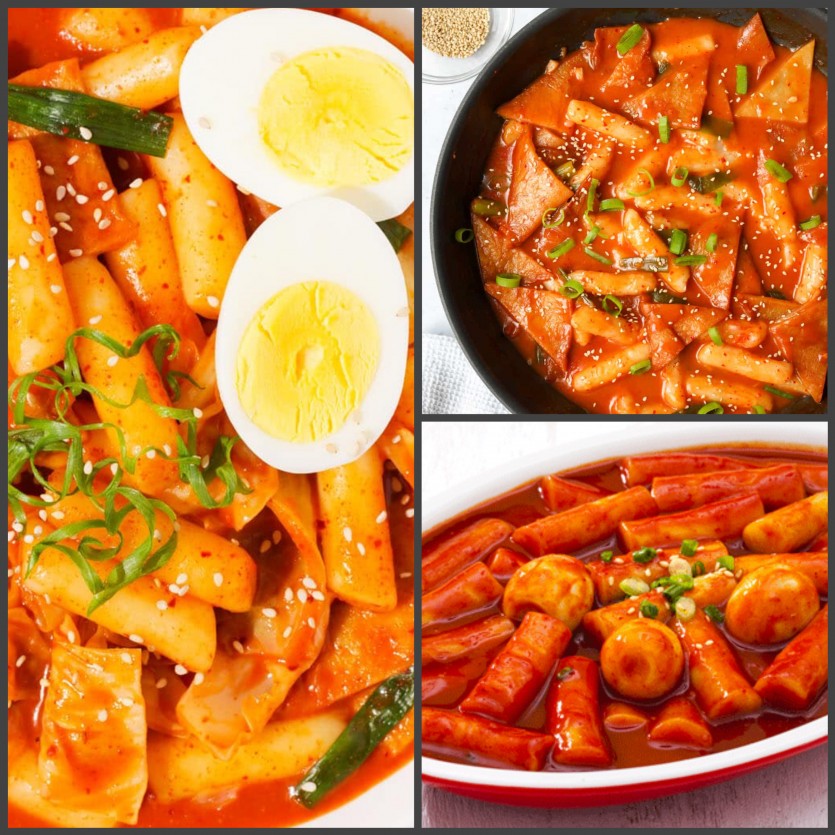Food & Drink Stir-fried rice cake (볶음밥) - The taste from heaven!
페이지 정보

본문
Stir-fried rice cake (볶음밥) - The taste from heaven!
Hello! Today I have something yummy for you!
They’re spicy Korean rice cakes that have their origins in Korea. Tteokbokki literally means stir-fried rice cakes: tteok is the word for rice cake, and bokki means fried. It’s an extremely popular dish, commonly purchased and eaten at snack bars as well as at street stalls. There are also dedicated restaurants for tteokbokki, where it is referred to as jeukseok tteokbokki (impromptu tteokbokki). It is also a popular home dish, as the rice cakes (garae-tteok) can be purchased in pre-packaged, semi-dehydrated form. In chuncheon, I am very greedy for Grandma Garae tteobokki restaurant’s (가래할머니 떡볶이) taste. It is also located halfway between where I stay and Hallym University. So I can easily purchase them when I need. For this post, I have used some photos taken from the internet. Because every time I tasted this, I forgot to take a photo. And I must say that I couldn’t find a photo of the tteokbokki dish that I was tasting. In addition to tteobokki, that dish has yummy flat glass noodles, boiled eggs, and fried dumplings.
Tteokbokki are made with long, white, cylindrical rice cakes simmered in a thick and spicy sauce. The popular Korean dish tteokbokki, also known as simmering rice cake, is formed from miniature garae-tteok known as tteokmyeon or, more popularly, tteokbokki-tteok. Eomuk, boiled eggs, and scallions are a few components that are frequently used in dishes with tteokbokki. The three main components of tteokbokki are gochujang, fishcake, and tteok (rice cakes). Gochujang (chili paste) or non-spicy ganjang can be used to season it (soy sauce). There are alternative names for this, such as stir-fried rice cakes, derkbokee, tteik-bokki, topokki, and ddukbokki. And also some variations of Gungjung-tteokbokki and Rabokki. Curry-tteokbokki, cream sauce-tteokbokki, jajang-tteokbokki, seafood-tteokbokki, rose-tteokbokki, galbi-tteokbokki, and more varieties are also available nowadays.
When we look back at the history of Tteokbokki, the first record on tteok-bokki appears in Siuijeonseo, a 19th-century cookbook, where the dish was listed using the archaic spelling steokbokgi (ᄯᅥᆨ복기). According to the book, tteok-bokki was known by various names, including tteokjjim (steamed rice cakes), tteok-japchae (stir-fried rice cakes), and tteok-jeongol (rice cakes hot pot). The royal court version was made from white tteok (rice cakes), sirloin, sesame oil, soy sauce, scallions, rock tripe, pine nuts, and toasted and ground sesame seeds, while the savory, soy sauce-based tteok-bokki was made in the head house of the Papyeong Yun clan, where high-quality soy sauce was brewed. In this version, ingredients such as short ribs were common. The name tteok-bokki also appears in the revised and enlarged edition of Joseon Yori Jebeop, where it is described as a soy sauce-based savory dish. Like other popular Korean dishes, tteok-bokki has seen numerous variations and fusions. Boiling eggs and pan-fried mandu (dumplings) were traditionally added to tteok-bokki. Ingredients such as seafood, short ribs, instant noodles, and chewy noodles are also common additions to the dish.
The gochujang-based spicy version of tteok-bokki is thought to have originally appeared in 1953. The tteok, or rice cake, that was served during the opening of a Korean-Chinese restaurant was mistakenly dropped into jajangmyeon by Ma Bok-Lim. She had the idea to season the tteok with gochujang, a type of Korean chili sauce, after noticing how nice it tasted. Then she started selling it in Sindang, which is now the most popular form of tteok-bokki. Hence, the district of Sindang is now famously known for tteok-boki.
The simplest way to describe the taste of tteokbokki is as sweet and spicy. This meal has a mild, garlicky finish and is sweet, savory, spicy, and hot. At the same time, it has a chewy, sensitive texture that reminds one of semi-soft cheese. If you have not tasted it yet, try it today!
Reference :
https://en.wikipedia.org/wiki/Tteokbokki
https://iamafoodblog.com/tteokbokki/
Photos: From Google
- PrevDifference between FHD and IPS Monitors 23.04.11
- NextHangan version of Chuncheon, in “Gonjichon” at the Month of World Health Day 23.04.08
댓글목록
There are no registered comments.

